Politics aside (ha!), how many times during your virtual travels through Pandemic Land have you stumbled across some website or other and thought to yourself ‘Well, this looks good’, only to realize, a few clicks in, that your attention hits an impasse (it only runs skin-deep) and so you move your cursor on? So much online is content to flaunt its algorithm precociously to unflatterable crowds, in source of the unfiltered experience, yet leaving dissatisfied. Some bot on here may counter: But what’s your idea of ‘good‘? To fill your face from every rich dish as you bask in the glaring sun of an endless URL?
Users need a climb-down into themselves rather than plough more land on Minecraft or scrape the ancient dust off the Internet Archive. But what’s wrong with leaving the tattered dregs of a virtual ruin? Instead of waiting around to surf the perfect wave, perhaps online imperfection transports us to something good closer to home?
Turn with me now to the websites of an unfinished exhibition. Their imperfection shines a mirror on our imperfect bodies, crouched over screens, nursing a vague but ever-present headache when we always can’t get what we want or we cannot find what we’re still looking for. Let’s take a trip to the heart (where all ladders start), to documenta 14 and its (historical) website.
The website, designed by Laurenz Brunner & Julia Born (one of four teams/agencies employed for the graphic design of the different components of the exhibition), began life back in 2015 (some 18 months before the exhibition opened in Athens and Kassel).

In a July 2015 interview for the research project Digital Strategies in Genre-Defining Magazines, Brunner discusses the development of the website in relation to the other aspects of documenta 14 design ethos:
There is also this idea of a non-corporate communication strategy, not even attempting a unified homogenous voice, but allowing for a multi-faceted communication strategy and using this as part of the identity of the event. With the visual identity, we have consciously introduced a couple of ingredients that can grow and be re-appropriated and lost again and picked up by other designers. So it’s not just a rigid branding template which everyone follows, but it is much more of a kind of play field, which we have already started working with. We are very interesting in seeing how others, the audience and the collaborators, will interact with it.
If you visit the (historical) exhibition website now, you can see how this ‘play field’ has grown, with elements from the other designers merging with Brunner and Born’s overall design.
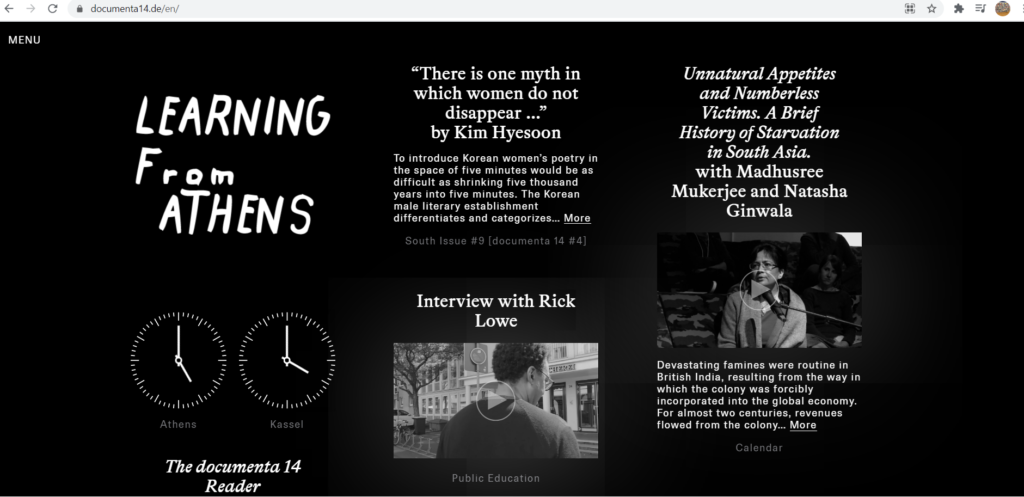
For example, above you see the Pueblo typeface by Vier5 (Marco Fiedler and Achim Reichert) that marked the Athens side of the exhibition, from the map booklet and street signs to the distinctive marble blocks with participating artists’ names.
But perhaps the most significant aspect of the documenta 14 website that reflects the ethos articulated by Brunner back in the Summer of 2015 is the mechanism (and here I have no idea what the technical term actually is) whereby the content changes within a set of established blocks/topics on each visit. So, if I refresh the page that I took the above screenshot from, it now looks like this:
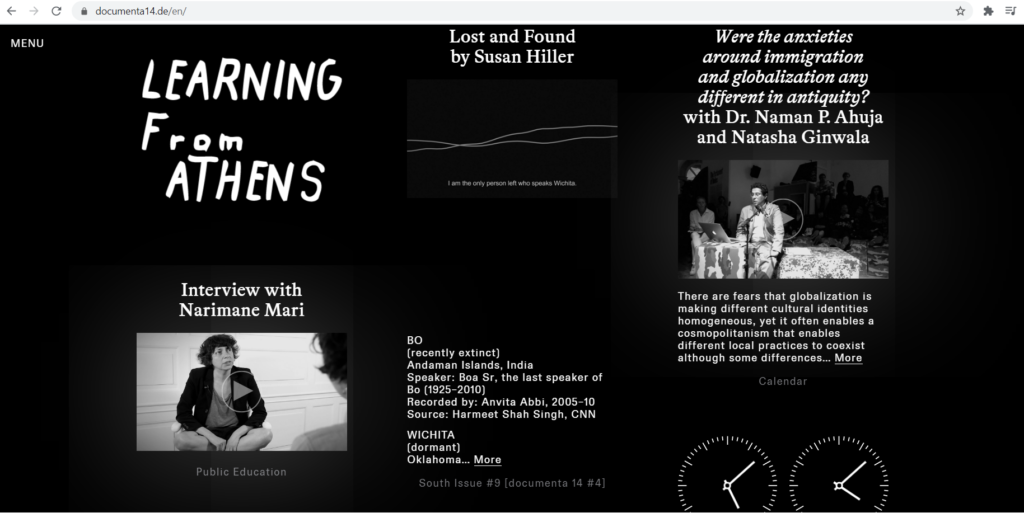
Here you see the clocks marking the time in Athens and Kassel (still ticking) have moved to the right and down, while the three blocks representing the Public Education program (aneducation), the 4th issue of the documenta 14 magazine, South as a State of Mind and an event from the Public Program (A Parliament of Bodies) stay the same, but are populated by different entries. This shift happens throughout the website, which means that for each visitor a different perspective on the exhibition is offered.
Perhaps most significantly for an historical website, if you were to click on any of these blocks, you would be able to watch the videos of the artist interviews for the Public Education program and the talks/performances of the Public Programs, as well as read the article from the magazine.
Yet this ongoing access reaches a limit for some areas of the website. In spite of the alluring triangle willing you to press play, clicking on the Public TV section of the website does not then lead you to watch the programs or even the trailers.
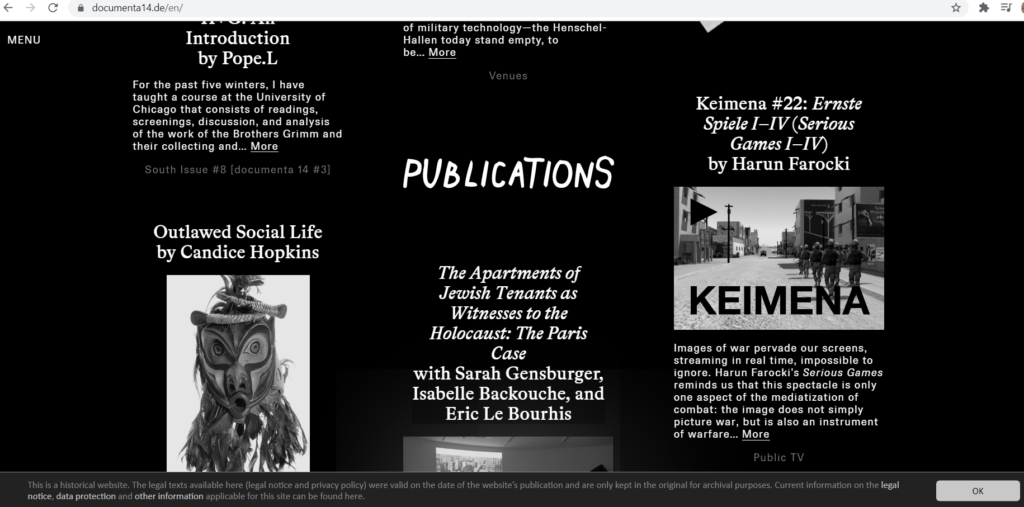
The same is the case for the Public Radio (Every Time A Ear Di Soun) section. The play triangle is there for the commissioned radio works, but they no longer play.
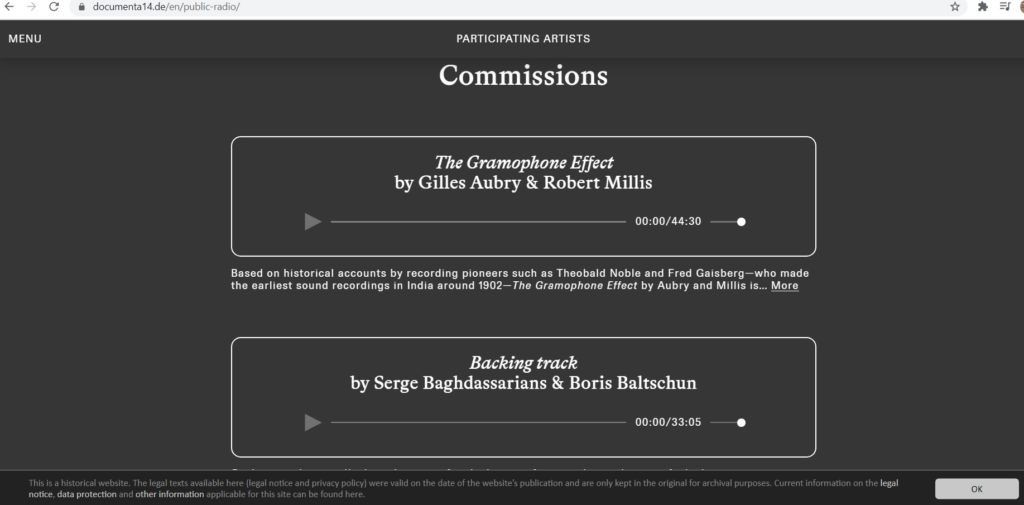
Even the articles in the magazine are not fully accessible, since many of the images are left blank, presumably after copyright has expired.

Here the website’s status as ‘historical’ starts to sink in.
This is a historical website. The legal texts available here (legal notice and privacy policy) were valid on the date of the website’s publication and are only kept in the original for archival purposes. Current information on the legal notice, data protection and other information applicable for this site can be found here.
But rather than shuffling away in disappointment, what would it mean to embrace the incompleteness of the documenta 14 website? What did you expect anyway, for the website of such a huge, sprawling exhibition to be there, waiting for you at your fingertips? For every corner to be mapped and ready to be consumed? No, this website encourages you to start out from where it drops you off.
Type the caption of the blocked image from the magazine article into a GoogleImage search and you may even find the exact image, revealed from the depth of the search engine’s memory. (If you are book-obsessed like me, you could buy the paper version of the four issues of the South as a State of Mind magazine and see every image accompanying every article, leaving the screen behind).
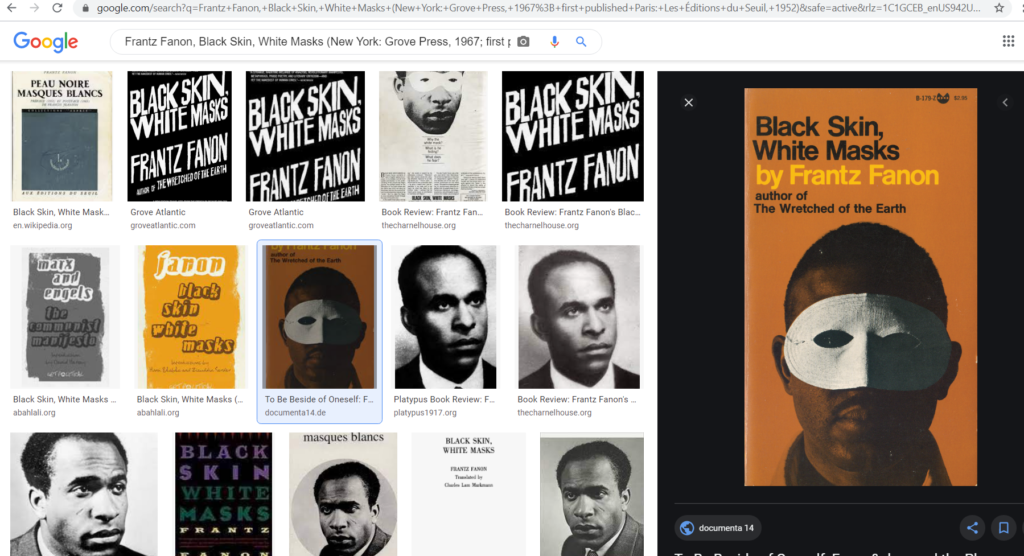
If you can’t hear the radio commission, see if it appears on Mixcloud or elsewhere online. (You could even take a further step and contact the artist directly – maybe they’d even be willing to share the sound file with you for your personal listening pleasure!)
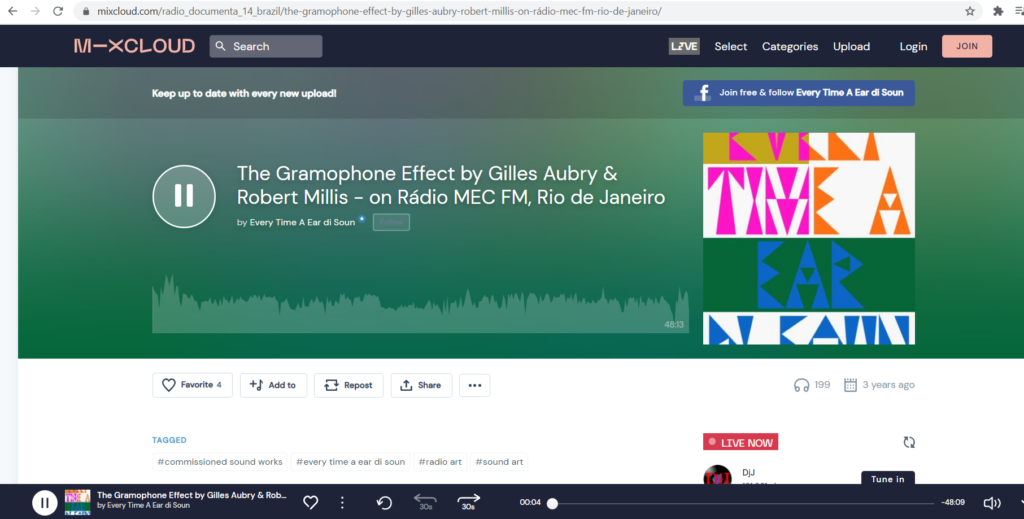
If you can’t watch one of the programs on the Public TV, remember the name of the film and during this time of online screenings, maybe you will get lucky and be able to watch it there. (I first encountered the work of Sarah Maldaror as part of the TV Politics program within the Public TV program and was able to watch her films (several of which overlapped with the documenta 14 selection) as part of an online screening by Another Gaze journal.)
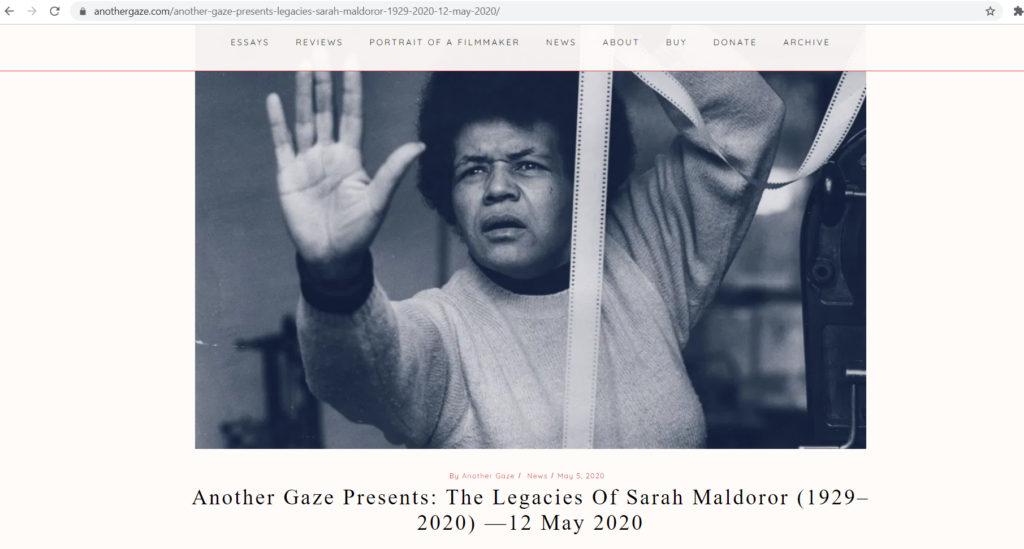
It is as if the historical documenta 14 website is the site from which the very idea of an unfinished exhibition emerges. The historical exhibition website, like one of your digital ruins, Andreas Angelidakis, reminds us that there is no place for perfection, online or off. The historical website – like the old exhibition catalog – reminds us and provokes us into doing the work here and now. Like a score, an historical exhibition website only resonates when its users play their parts. Like a syllabus, an historical website gives you the modules and the readings, but you are the one that needs to read.
What would it mean to take this approach to the historical exhibition website into the present moment and adding the proliferation of online screenings during the pandemic into the mix? I recently experienced Signs of Remembering: Women’s Resistance in Middle Eastern and North African Documentaries, organized by the Wexner Center for the Arts and curated by Ohio State History of Art graduate student Dareen Hussein and Film/Video Curatorial Assistant Layla Muchnik-Benali.
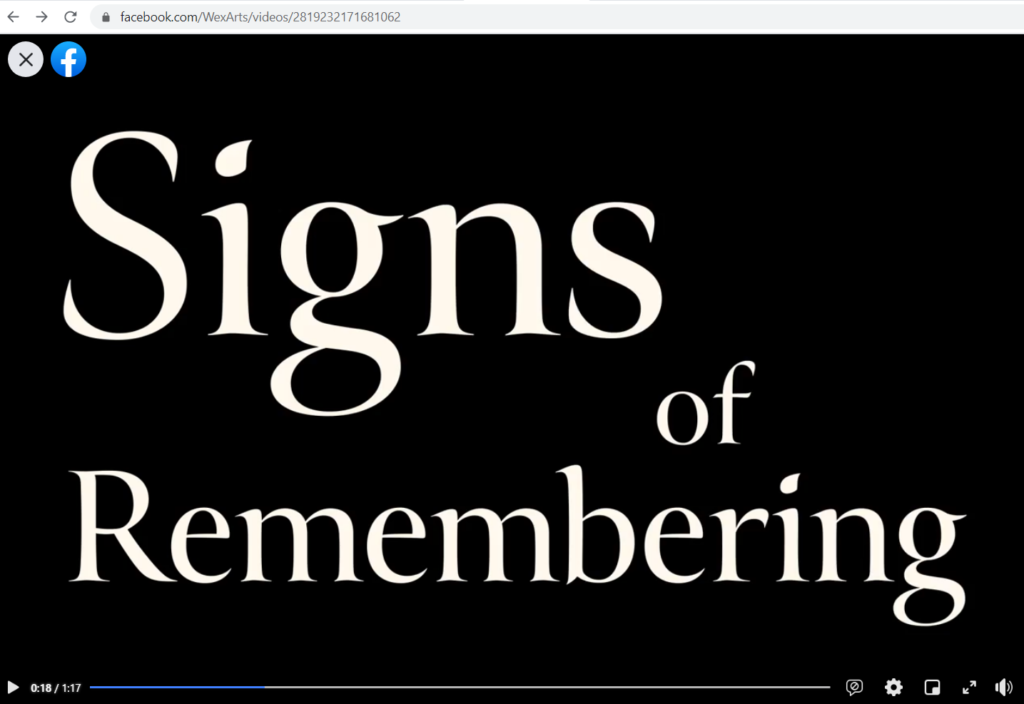
I knew that I wanted to try to watch all of the films, but the screening was only available for a week, so I knew it would be hard. As a way to encourage myself to commit to watching everything, I decided to write a viewing diary. Here is what I wrote:
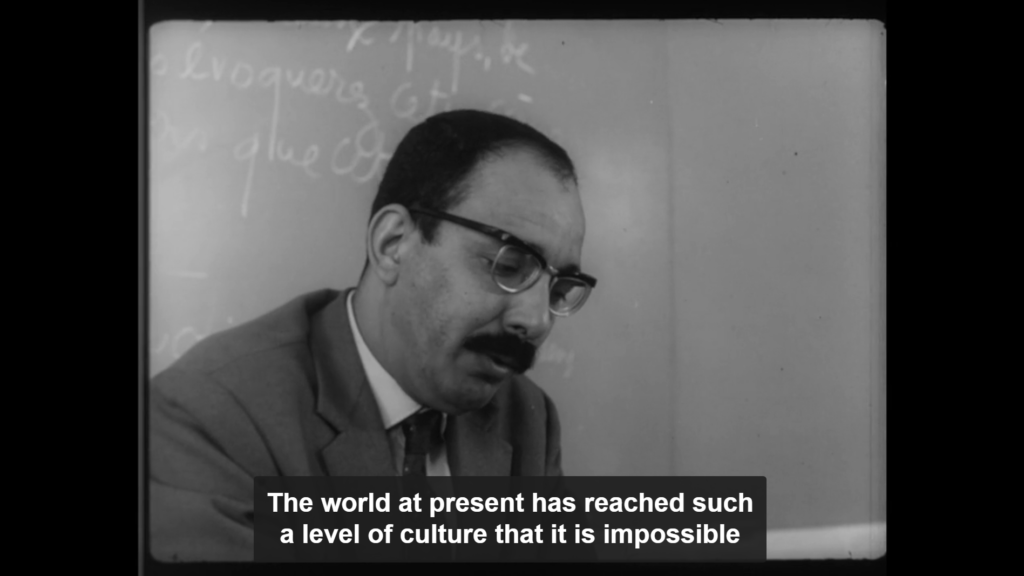
Thurs March 18th
7pm – waiting for the Cauleen Smith talk [an online artist talk organized by the Wex], I see the trailer for the series & am struck by the difficult resonances with the murder of Asian American women in Atlanta. This series takes place under this unexpected (although also not unexpected) context of white male supremacy & violence, with deep roots in US imperialism & colonialism.

Friday March 19th – first day of the screening
10:30am – I celebrate the opening of the series by watching the first few minutes of the conversation between curators Dareen Hussein and Layla Muchnik-Benali with Mary Jirmanus Saba, director of the 2017 film A Feeling Greater than Love included in the screening. At the moment she articulates the privilege (& also a sense of awe) at being in the company of such amazing films – as her film continues a tradition – I pause the film & decide to watch the films in chronological order, starting with Ahmed Lallem’s 1966 documentary The Women. [Note to future reader: while the other films in the series are no longer available to screen, The Women is available until April 2 & the conversation with Saba until June 30].

A few minutes in the tension between how the young Algerian women speak of their lives & how their male school teacher presents there lives is immediately apparent. Scene replayed later – different teacher & topic (Islam & freedom) but with laughter of the women. The Hijab & the dishonest women without virtue. The space of cinema & classroom (co-education). Duties (following the revolution) vs fun. Necessity of imitation. Posters of the Journee Internationale des Femmes March 8th. Student who calls to focus on concrete problems around them – parents etc – not about becoming an engineer. Just saw in the credits that none other than Sarah Maldoror was the assistant director!
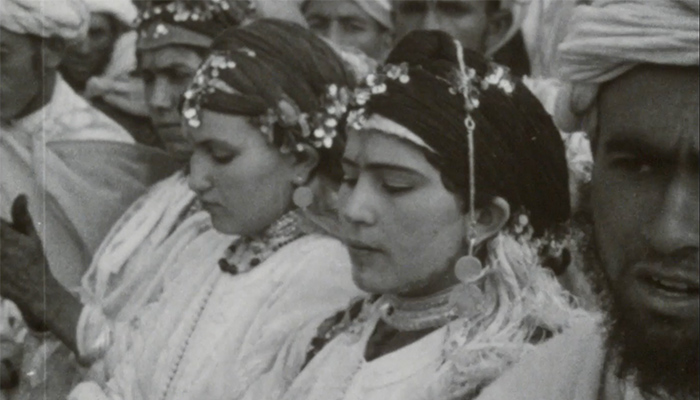
1:15pm – Watch Assia Djebar’s The Zerda or the Songs of Forgetting (1982). Memory is a veiled woman. Small boy/prince on a horse, shuffling barefoot dance. “The colonial night falls on Algeria” – man in a top hat. “We are ground down like acorns”. “We live off acorns”. “Only her eye fixes our present” – repeated from earlier. On the arrival of the parlimentarians in 1923 – the oak & the ash are now equals. “Hannibal or Jugurtha, who has been born inside you, Abd el-Krim?” Omar al-Mukhtar. Two ghosts of the future. El-Krim’s defeat of the Spanish was “the Dien Bien Phu of the 1920s” a battle in the First Indochina War that took place between 13 March and 7 May 1954. It was fought between the French Union’s French Far East Expeditionary Corps and Viet Minh communist revolutionaries. “You have stolen all the land – where can you tie up a donkey?” “they turned us into dung-carriers’ “What remains of this century apart from this image?” – the 3 boys cleaning the soldier’s boots. [Record a video of this sequence]. They are there – their gaze distorts. We survive. They photograph us.
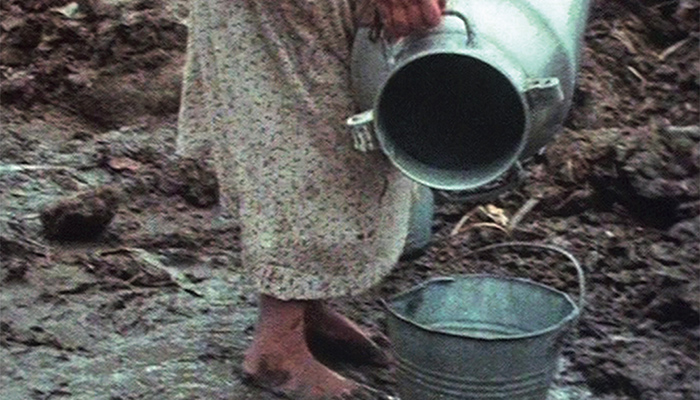
4:15pm – Watch Atteyat Al-Abnoudy’s Permissable Dreams (1983). Nobody pays me & I don’t ask for anything. If a girl learned to read & write, she’d write love letters to someone. I dream with what I have in my hand
Wednesday March 24th
2:45pm – Watch Letter to My Sister (2006) by Habiba Djahnine. Scene in the car from the trailer – since seeing it nearly a week ago, another mass shooting in the US (in Colorado) – marking the tension & preparing for the white supremacist backlash against an “Arab” perpetrator [Note later the ‘fake news’ story that CNN had a banner during the breaking story that called the gunman ‘factually Arab’ but ‘morally white’]. Still male aggression is the constant. Two women’s signatures for each man’s in the Koran. Teaching – it must be done, it must be passed on. Flowers in the water.

9:45pm – Start watching A Feeling Greater Than Love (2017) with my partner Rebeka [Unable to take notes at the time]
Thursday March 25th
9:30pm – Continue watching A Feeling Greater Than Love with Rebeka [No notes]
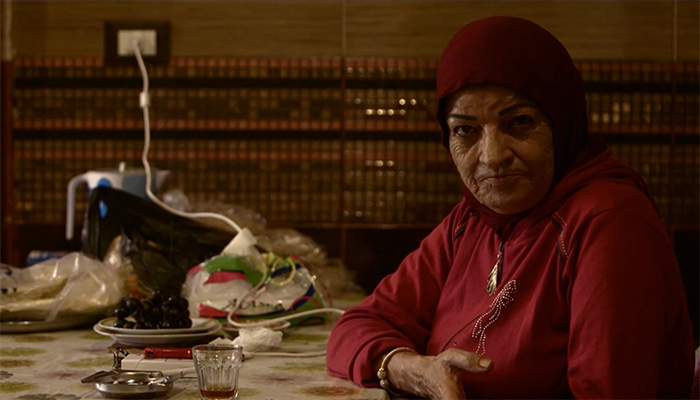
Friday March 26th – the last day of the screening
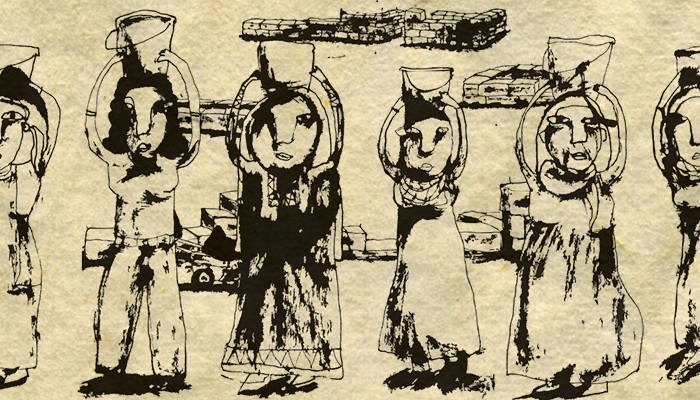
12:45pm – start watching Dahna Abourahme’s The Kingdom of Women (2010) over lunch. Animation. Offering historical continuation of A Feeling Greater Than Love. Unable to finish watching. Screening ended.

Reading back over these notes now, I feel a distinct sense of failure to somehow record more explicitly and in greater detail the effect these films had on me. But rather than using this blog post as a second chance – as an opportunity to remember and memorialize this experience – instead I want remain within the imperfection of this experience. I am reminded of a recent essay I read by Be Oakley (aka GenderFail) called Queer Accomplices: This is Not Another Photo of the Gay Male Body (2021) and I quote:
Queer bodies are often in transition between what they are and what they wish they could be. A queer body is fluid, changing, and imperfect. “Imperfect” in a relation to dominant culture does not in any way mean bad, undesirable, or damaged. To be imperfect in a system of beauty standards that are transphobic, ableist, fat-phobic, racist, and heterosexist is a powerful gesture.
Flipping the pages to the back of the booklet, we read that this conception of imperfection is part of the working process of GenderFail:
GenderFail is an imperfect publishing platform that looks at various forms of failure – from personal, public, and political perspectives – as a boundless form of creative potential.
And it is this potential that I find operating in how we respond to an historical exhibition website or a past online film screening. They offer an unfinished, unrefined, and imperfect experience for us to be a part of, exemplified by how they are now in the past, but still available to us to engage with in and for the future. As Cannupa Hanska Luger, concept artist of STTLMNT: Indigenous Digital Occupation would put it, this a choice between maintenance over preservation and while the latter may be up to the streams of museums and arts institutions and their missions of access and availability, the former is up to us, in all of our imperfections.

To be continued…
[‘Streaming Imperfection’ is an extract from Chapter 4: BODIES of the ongoing online project Like Wind on Rushes which drafts a book to come called Whisper into a Hole.]